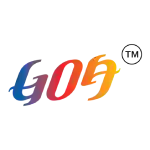Shigmo Festival
Colourful Rhythms of Shigmo
Shigmo is one of the biggest festivals that falls either in March or April. A farmer’s festival that announces the arrival of fresh produce, it is celebrated in music, song and dance. The commemorations have moved from the village centres to grand parades through the towns. Large crowds witness the spectacular performances. A float parade winds its way down the streets once the sun sets and the lights come on.
The music is typically dhol, taasha and kasale. Usually the festivities revolve around the village Mand. The Mand-dev and folk dieties are an essential part of the traditions. Goa observes two varieties of Shigmo: Dhakla (younger) and Thorla (Elder). The first is celebrated in Tiswadi, Ponda, Calangute and Quepem while the other in Bardez, Sattari, Bicholim and Pernem.
In dance, the rombat form is popular. Here groups of dancers join in dressed in colourful attire. The elaborate attire and variety of instruments make this form special.
Historic and comic elements combine to impart a rich and unique flavor to this festival.. Both these elements are evident in the different dance forms like Veeramel, Gade, Ghodemodni that highlight the heroic aspect. The comic aspects come through in the Zagor, Ranmalyem, Khele and Romat.
Given its nature worship, the dance is dedicated to the gods and goddesses Shantaguru-Kuti, Santeri, Ravalnath, Shantadurga-Damodar and others. The festival also showcases the varied cultural aspects of Goa. Most of these dances are performed at the various Shigmo parades in towns across Goa. It’s a wonderful experience to witness these first hand as Goa’s traditions come alive.All these celebrations culminate at the frenzied climax of Holi, the festival of colours.






